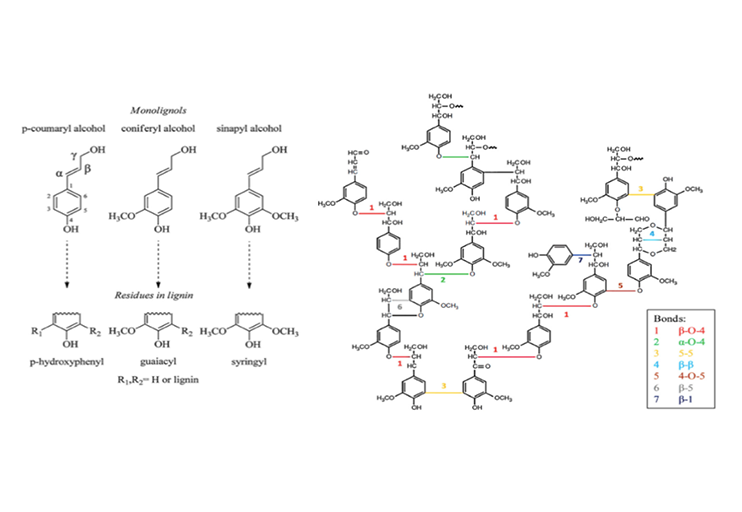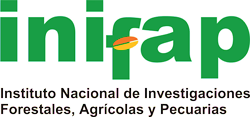Lignin extracted from pecan shells and its use as a biostimulant in plants
DOI:
https://doi.org/10.29312/remexca.v16i30.4055Keywords:
agro-residues, crops, enzymes, lignin, metabolites, synthesisAbstract
The constant increase in the world’s population represents a significant challenge for the agricultural sector since there is a need to find efficient and non-polluting solutions that allow increasing the production of plant foods in quantity and quality, with fewer inputs, as well as dealing with the large amount of waste produced. One of the alternatives employed has been the use of biostimulants of plant metabolism, which improve plant growth and yield and increase tolerance to biotic and abiotic stress. Lignin and its derivatives (oligomers, monolignols, lignosulfonates, ammonium lignosulfonates, calcium lignosulfonates, etc.) are aromatic heteropolymers that constitute 40% of the plant cell wall and in recent years have been shown to function as biostimulants and fertilizer carriers, evidencing an increase in biomass, root, and production, due to a potentiation in the photosynthetic rate and metabolic pathways related to carbohydrates. One source for obtaining them can be agricultural waste, such as pecan shells, which are agro-residues produced on a large scale in northern Mexico and until today, have been poorly used; the objective of the manuscript focused on collecting and analyzing the state of the art of the use of lignin from the agro-residues of pecan cultivation and its potential use as a biostimulant of metabolism in plants.
Downloads
References
Agustin-Salazar, S.; Cerruti, P.; Medina-Juárez, L.; Scarinzi, G.; Malinconico, M. Soto-Valdez, H. and Gamez-Meza, N. 2018. Lignin and holocellulose from pecan nutshell as reinforcing fillers in poly (lactic acid) biocomposites. International Journal of Biological Macromolecules. 115:727-736. https://doi.org/10.1016/j.ijbiomac.2018.04.120.
Ahmad, U.; Ji, N.; Li, H.; Wu, Q.; Song, C.; Liu, Q.; Ma, D. and Lu, X. 2021. Can lignin be transformed into agrochemicals? Recent advances in the agricultural applications of lignin. Industrial Crops and Products. 170. https://doi.org/10.1016/j.indcrop.2021.113646.
Campobenedetto, C.; Grange, E.; Mannino, G.; Van-Arkel, J.; Beekwilder, J.; Karlova, R.; Garabello, C.; Contartese, V. and Bertea, C. 2020. A biostimulant seed treatment improved heat stress tolerance during cucumber seed germination by acting on the antioxidant system and glyoxylate cycle. Frontiers in Plant Science. 11:1-12. https://doi.org/10.3389/fpls.2020.00836.
Carrillo-Nieves, D.; Rostro-Alanís, M.; Cruz-Quiroz, R.; Ruiz, H.; Iqbal, H. and Parra-Saldívar, R. 2019. Current status and future trends of bioethanol production from agro-industrial wastes in Mexico. Renewable and Sustainable Energy Reviews.102:63-74. https://doi.org/10.1016/j.rser.2018.11.031.
Chen, X.; Moiser,N. and Ladisch, M. 2024. Valorization of lignin from aqueous-based lignocellulosic biorefineries. Trends in biotechnology. 42(11):1348-1362. https://doi.org/10.1016/j.tibtech.2024.07.004.
Chio, C.; Sain, M. and Qin, W. 2019. Lignin utilization: a review of lignin depolymerization from various aspects. Renewable and Sustainable Energy Reviews. 107:232-249. https://doi.org/10.1016/j.rser.2019.03.008.
De La Rosa, L.; Alvarez-Parrilla, E. and Shahidi, F. 2011. Phenolic compounds and antioxidant activity of kernels and shells of Mexican pecan (Carya illinoinensis). Journal of Agricultural and Food Chemistry. 59(1):152-162. https://doi.org/10.1021/jf1034306
De Prá-Andrade, M.; Piazza, D. and Poletto, M. 2021. Pecan nutshell: morphological, chemical and thermal characterization. Journal of Materials Research and Technology. 13:2229-2238. https://doi.org/10.1016/j.jmrt.2021.05.106.
Díaz-Elizondo, J.; Ayala-Velazco, A.; Benavides-Mendoza, A.; Enriquez-Medrano, F. and Medrano-Macías, J. 2024. Obtaining lignin from nutshells under mild extraction conditions and its use as a biostimulant in tomato seedlings. Horticulturae. 10(10):1079. https://doi.org/10.3390/horticulturae10101079.
Dipak-Kumar, H. and Aloke, P. 2020. Role of biostimulant formulations in crop Production: an overview. International Journal of Agricultural Sciences and Veterinary Medicine. 8(2):38-46.
Drobek, M.; Frąc, M. and Cybulska, J. 2019. Plant biostimulants: importance of the quality and yield of horticultural crops and the improvement of plant tolerance to abiotic stress-a review. Agronomy. 9(6). https://doi.org/10.3390/agronomy9060335.
Eraghi Kazzaz, A.; Hosseinpour-Feizi, Z. and Fatehi, P. 2019. Grafting strategies for hydroxy groups of lignin for producing materials. Green Chemistry. 21(21):5714-5752. https://doi.org/10.1039/c9gc02598g.
Ertani, A.; Francioso, O.; Tugnoli, V.; Righi, V. and Nardi, S. 2011. Effect of commercial lignosulfonate-humate on Zea mays L. metabolism. Journal of Agricultural and Food Chemistry. 59(22):11940-11948. https://doi.org/10.1021/jf202473e.
Florian, T.; Villani, N. Aguedo, M.; Jacquet, N.; Thomas, H. G.; Gerin, P.; Magali, D. and Richel, A. 2019. Chemical composition analysis and structural features of banana rachis lignin extracted by two organosolv methods. Industrial Crops and Products. 132:269-274. https://doi.org/10.1016/j.indcrop.2019.02.022.
Gebremikael, M.; Vandendaele, R.; Alarcon, M.; Torregrosa, R. and Neve, S. 2020. The efect of lignin application on plant growth and soil biological quality, EGU General Assembly. EGU2020-19535. https://doi.org/10.5194/egusphere-egu2020-19535.
Hilbig, J.; Alves, V.; Müller, C.; Micke, G.; Vitali, L.; Pedrosa, R. and Block, J. 2018. Ultrasonic-assisted extraction combined with sample preparation and analysis using LC-ESI-MS/MS allowed the identification of 24 new phenolic compounds in pecan nut shell [Carya illinoinensis (Wangenh) C. Koch] extracts. Food Research International.106(2017):549-557. https://doi.org/10.1016/j.foodres.2018.01.010.
Kok, A.; Wan Abdullah, W.; Tang, C.; Low, L.; Yuswan, M.; Ong-Abdullah, J.; Tan, N. and Lai, K. 2021. Sodium lignosulfonate improves shoot growth of Oryza sativa via enhancement of photosynthetic activity and reduced accumulation of reactive oxygen species. Scientific Reports. 11(1):1-13. https://doi.org/10.1038/s41598-021-92401-x.
Lim, S. and Matu, S. 2015. Utilization of agro wastes to produce biofertilizer. International Journal of Energy and Environmental Engineering. 6(1):31-35. https://doi.org/10.1007/s40095-014-0147-8.
Loredo-Medrano, J.; Bustos-Martínez, D.; Rivera-Rosa, J.; Carrillo-Pedraza, E.; Flores-Escamilla, G. and Ciuta, S. 2016. Particle pyrolysis modeling and thermal characterization of pecan nutshell. Journal of Thermal Analysis and Calorimetry. 126(2):969-979. https://doi.org/10.1007/s10973-016-5541-4.
Maceda, A.; Soto-Herández, M.; Peña-Valdivia, C.; Trejo, C. y Terrazas, T. 2021. Lignina: composición, síntesis y evolución. Madera y Bosque. 27(2):e2722137. Doi: 10.21829/myb.2021.2722137.
Magallanes, H.; Landeros, C. y Villegas, H. 2020. Desarrollo tecnológico para la optimización de la extracción de nuez pecanera. Revista Mexicana de Ciencias Agrícolas. 11(5):1111-1121. https://doi.org/10.29312/remexca.v11i5.2300.
Mahmud, M.; Shamim-Hasan, M.; Islam-Sardar, M.; Adnan-Shafin, A.; Sohanur-Rahman, M.; Mosaddek-Hossen, M.; Md-Hasan, C.; Islam-Sardar, M.; Adnan-Shafin, A.; Rahman, M. and Hossen, M. 2023. Brief review on applications of lignin. Journal of chemical review. 5(1):56-82. https://doi.org/10.22034/JCR.2023.359861.1186.
Moccia, F.; Agustin-Salazar, S.; Berg, A.; Setaro, B.; Micillo, R.; Pizzo, E.; Weber, F.; Gamez-Meza, N.; Schieber, A.; Cerruti, P.; Panzella, L. and Napolitano, A. 2020. Pecan (Carya illinoinensis (Wagenh.) K. Koch) nut shell as an accessible polyphenol source for active packaging and food colorant stabilization. ACS Sustainable Chemistry and Engineering. 8(17):6700-6712. https://doi.org/10.1021/acssuschemeng.0c00356.
Olivas-Tarango, A.; Rodríguez-Peña, C.; Cabrera-Álvarez, E.; Obregón-Solís, E.; Longoria-Garza, G.; García-Fajardo, J.; Flores-Montaño, J.; Morales-Landa, J.; Reyes-Vázquez, N.; Santos-Moreno, O. and Tarango-Rivero, S. 2019. Agronomía sustentable y aprovechamiento alternativo de la nuez. https://ciatej.repositorioinstitucional.mx/jspui/bitstream/1023/671/1/libronueznoreste.pdf?fbclid=iwar0d1mzqfj-nbffi8hk9rw586e7v9fbdsumxy0t-teh7mi-3-j8-vlnvzce.
Orona, I.; Sangerman, D.; Fortis, M.; Vázquez, C. and Gallegos, M. 2013. Producción y comercialización de nuez pecanera (Carya illinoensis Koch) en el norte de Coahuila, México. Revista Mexicana de Ciencias Agricolas. 4(3):461-476.
Prado, A.; Manion, B.; Seetharaman, K.; Deschamps, F.; Barrera Arellano, D. and Block, J. 2013. Relationship between antioxidant properties and chemical composition of the oil and the shell of pecan nuts [Carya illinoensis (Wangenh) C. Koch]. Industrial Crops and Products. 45:64-73. https://doi.org/10.1016/j.indcrop.2012.11.042.
Ranum, P.; Peña-Rosas, J. and Garcia-Casal, M. 2014. Global maize production, utilization, and consumption. Annals of the New York Academy of Sciences. 1(13-12):105-112. https://doi.org/10.1111/nyas.12396.
Ruwoldt, J. 2020. A critical review of the physicochemical properties of lignosulfonates: chemical structure and behavior in aqueous solution, at surfaces and interfaces. Surfaces. 3(4):622-648. https://doi.org/10.3390/surfaces3040042.
Sánchez, C. 2009. Lignocellulosic residues: biodegradation and bioconversion by fungi. Biotechnology Advances, 27(2):185-194. https://doi.org/10.1016/j.biotechadv.2008.11.001.
Savy, D. and Cozzolino, V. 2022. Novel fertilising products from lignin and its derivatives to enhance plant development and increase the sustainability of crop production. Journal of Cleaner Production. 366:132832. https://doi.org/10.1016/j.jclepro.2022.132832.
Savy, D.; Cozzolino, V.; Nebbioso, A.; Drosos, M.; Nuzzo, A.; Mazzei, P. and Piccolo, A. 2016. Humic-like bioactivity on emergence and early growth of maize (Zea mays L.) of water-soluble lignins isolated from biomass for energy. Plant and Soil. 402(1-2):221-233. https://doi.org/10.1007/s11104-015-2780-2.
Shahrajabian, M.; Chaski, C.; Polyzos, N. and Petropoulos, S. A. 2021. Biostimulants application: a low input cropping management tool for sustainable farming of vegetables. Biomolecules. 11(6):1-18. https://doi.org/10.3390/biom11050698.
Suárez-Jacobo, A.; Obregon, E.; Urzua, E. and García-Fajardo, J. 2016. Retos y oportunidades para el aprovechamiento de la nuez pecanera en México. CIATEJ: Guadalajara, México. ISBN 9-78607-974-2188.
Villamil-Galindo, E.; Van-Velde, F. and Piagentini, A. 2021. Strawberry agro-industrial by-products as a source of bioactive compounds: effect of cultivar on the phenolic profile and the antioxidant capacity. Bioresources and Bioprocessing. 8(1):61. https://doi.org/10.1186/s40643-021-00416-z.
Yakhin, O.; Lubyanov, A.; Yakhin, I.; Brown, P. and Pascale, S. 2017. Biostimulants in plant science : a global perspective. Frontiers in plant science. 7:2049. https://doi.org/10.3389/fpls.2016.02049.

Published
How to Cite
Issue
Section
License
Copyright (c) 2025 Revista Mexicana de Ciencias Agrícolas

This work is licensed under a Creative Commons Attribution-NonCommercial 4.0 International License.
The authors who publish in Revista Mexicana de Ciencias Agrícolas accept the following conditions:
In accordance with copyright laws, Revista Mexicana de Ciencias Agrícolas recognizes and respects the authors’ moral right and ownership of property rights which will be transferred to the journal for dissemination in open access. Invariably, all the authors have to sign a letter of transfer of property rights and of originality of the article to Instituto Nacional de Investigaciones Forestales, Agrícolas y Pecuarias (INIFAP) [National Institute of Forestry, Agricultural and Livestock Research]. The author(s) must pay a fee for the reception of articles before proceeding to editorial review.
All the texts published by Revista Mexicana de Ciencias Agrícolas —with no exception— are distributed under a Creative Commons License Attribution-NonCommercial 4.0 International (CC BY-NC 4.0), which allows third parties to use the publication as long as the work’s authorship and its first publication in this journal are mentioned.
The author(s) can enter into independent and additional contractual agreements for the nonexclusive distribution of the version of the article published in Revista Mexicana de Ciencias Agrícolas (for example include it into an institutional repository or publish it in a book) as long as it is clearly and explicitly indicated that the work was published for the first time in Revista Mexicana de Ciencias Agrícolas.
For all the above, the authors shall send the Letter-transfer of Property Rights for the first publication duly filled in and signed by the author(s). This form must be sent as a PDF file to: revista_atm@yahoo.com.mx; cienciasagricola@inifap.gob.mx; remexca2017@gmail.
This work is licensed under a Creative Commons Attribution-Noncommercial 4.0 International license.


